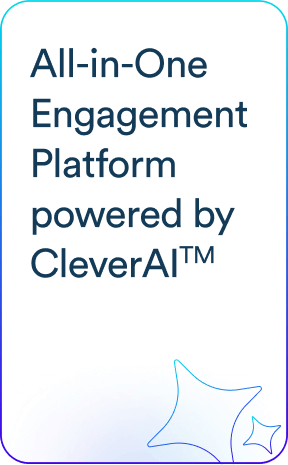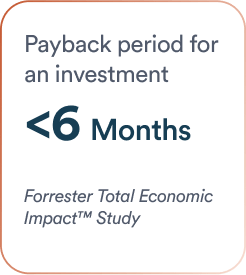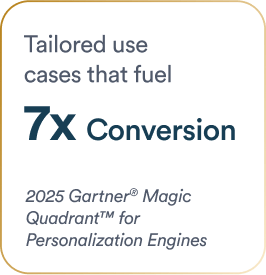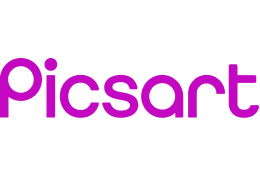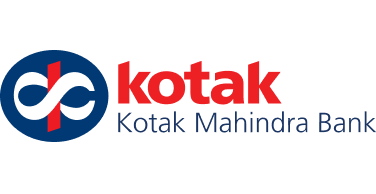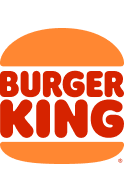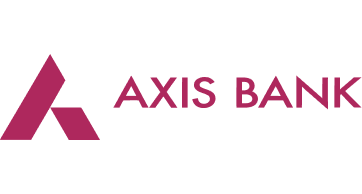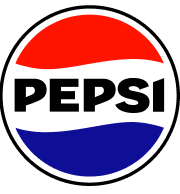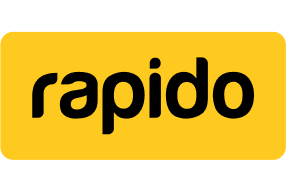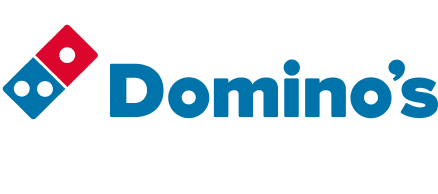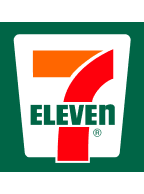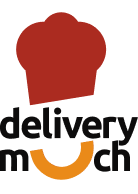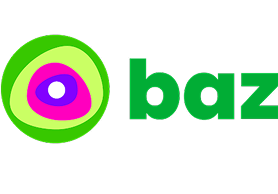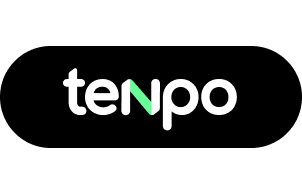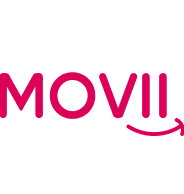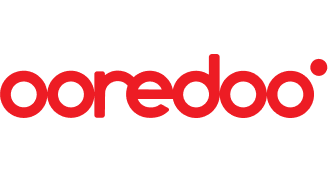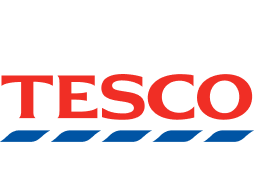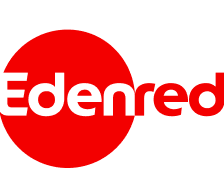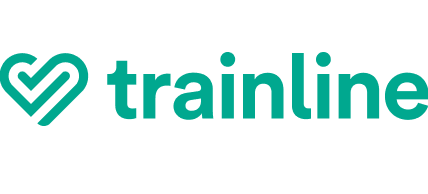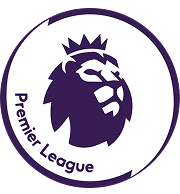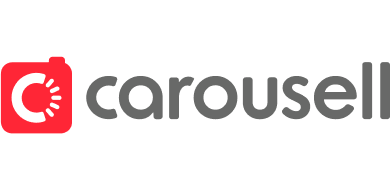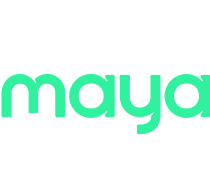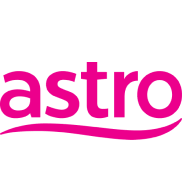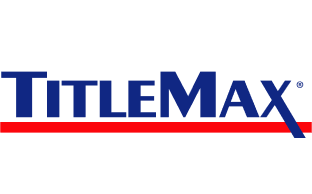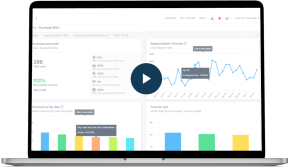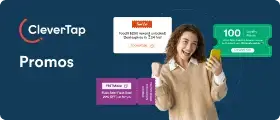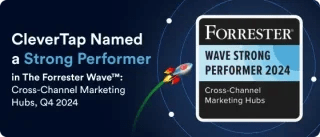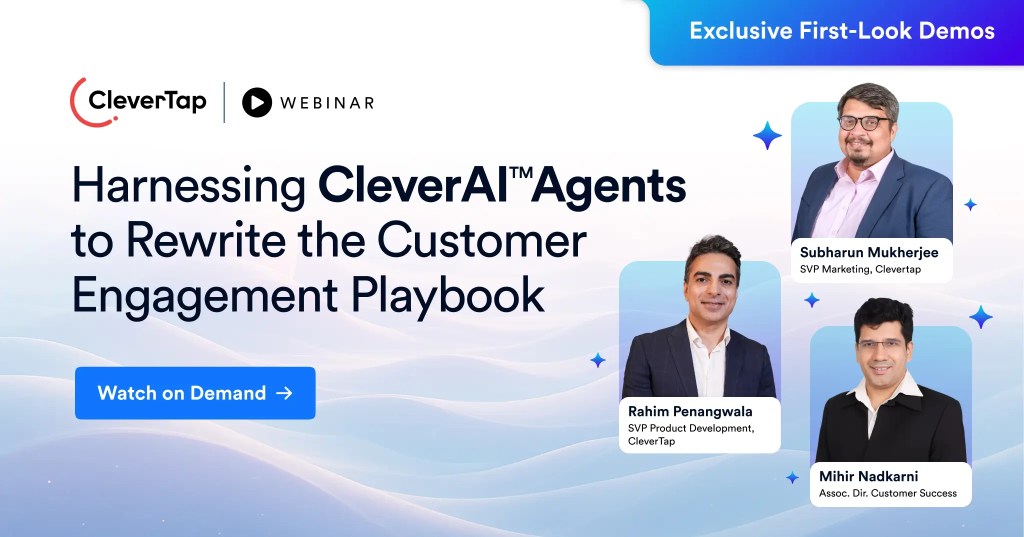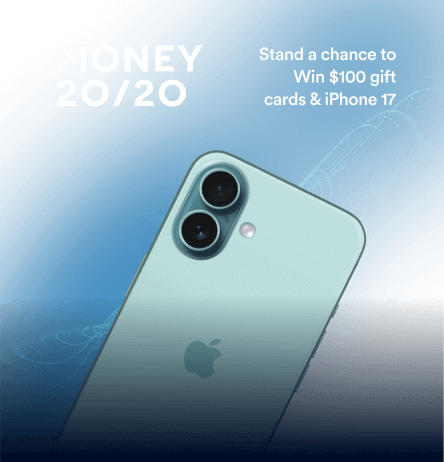Loyalty marketing has emerged as a powerful strategy for driving customer retention and long-term business growth. Rather than focusing solely on acquiring new customers, forward-thinking brands prioritize loyalty initiatives that reward ongoing engagement, foster deeper relationships, and encourage repeat purchases.
This shift is critical, as studies reveal reveal that increasing customer retention rates by just 5% can boost profits by 25% to 95%. Moreover, 79% of consumers say they’re more likely to recommend brands with good loyalty programs, demonstrating the significant impact of loyalty programs on customer retention and advocacy.
With rising acquisition costs and a crowded marketplace, loyalty marketing provides a proven path to sustainable revenue by turning casual shoppers into lifelong advocates. This guide will unpack what loyalty marketing is, why it matters, and how innovative brands implement successful loyalty frameworks to keep customers coming back for more.
TL;DR: Loyalty Marketing in a Nutshell
- Loyalty marketing is about creating long-term relationships with customers by rewarding repeat behavior, personalizing experiences, and encouraging advocacy. Instead of chasing only new acquisitions, it focuses on turning casual buyers into loyal supporters. This matters because even a 5% increase in retention can raise profits by 25–95%*, showing that loyalty is far more cost-effective than acquisition.
- Customers show loyalty in different ways, through transactions like points and discounts, behavioral actions such as referrals or reviews, emotional bonds built on trust and shared values, or by joining tiered, community-driven, or paid programs.
- To make these programs effective, brands use proven models such as the Loyalty Ladder, RFM segmentation, the Hooked Model, and the AARRR lifecycle framework, each aligning tactics to different customer journey stages.
- Building on these foundations, companies implement loyalty marketing strategies like welcome bonuses, tiered memberships, referral rewards, gamified experiences, milestone perks, and cause-based initiatives that connect values with customer impact.
- When done right, loyalty marketing boosts retention, increases lifetime value, and transforms customers into passionate brand advocates who fuel long-term growth.
What Is Loyalty Marketing?
Loyalty marketing is a strategic approach focused on building and nurturing long-term relationships with existing customers to encourage repeat business and brand advocacy. It involves designing loyalty programs, incentives, and personalized experiences that make customers feel valued and appreciated. This increases their likelihood to choose a brand consistently over competitors.
Beyond simple rewards, loyalty marketing integrates customer insights to tailor engagements that deepen emotional connections and foster ongoing loyalty.
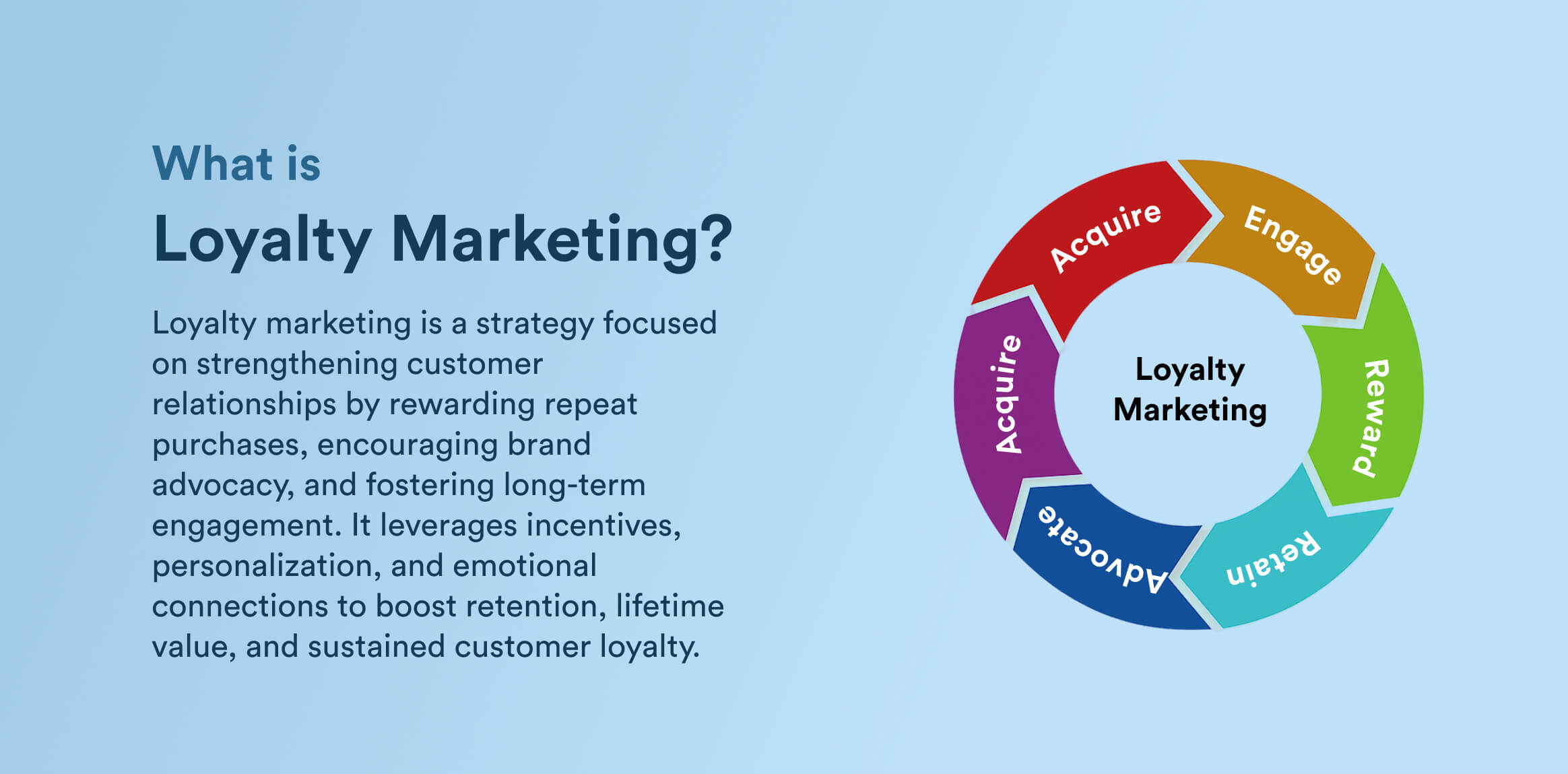
Industries widely adopt this approach, such as:
- In e-commerce, companies use tiered rewards and personalized offers to increase repeat purchases.
- Subscription loyalty programs leverage exclusive perks and milestones to reduce churn and maintain engagement.
- Fintech firms offer cashback and referral bonuses to incentivize continued usage.
- SaaS businesses implement rewards linked to product usage or renewals.
- Gaming brands often use gamified loyalty programs with achievement badges and in-app rewards to sustain player retention.
Why Is Loyalty Marketing Crucial?
For brands aiming to thrive in competitive markets, loyalty marketing is a critical tool to strengthen customer bonds and unlock consistent growth. It helps companies move beyond single purchases by fostering lasting relationships and customer-centered experiences. The following benefits explain why loyalty marketing is crucial for companies aiming to build sustainable growth and defend competitive advantage:
- Increased Customer Retention: Loyal customers are more inclined to remain with a brand, leading to reduced churn and steadier revenue streams.
- Higher Customer Lifetime Value: Repeat business and deeper engagement often translate into greater spending over time from loyal customers.
- Enhanced Brand Reputation: Consistently positive experiences foster stronger brand perception and trust among both existing and potential customers.
- Lower Marketing Costs: Retaining customers through loyalty initiatives is typically more cost-effective than constantly acquiring new ones.
- Access to Valuable Customer Insights: Loyalty programs generate rich data on customer preferences and behavior, enabling more personalized marketing and product development.
You might like to read: Benefits of customer loyalty programs every marketer must know.
Types of Customer Loyalty in Marketing
Understanding the different types of loyalty is essential to building an effective loyalty marketing strategy. Since customers are motivated by different factors, brands need tailored program designs that address these varying behaviors. With that in mind, here are the primary types of loyalty found in modern marketing:
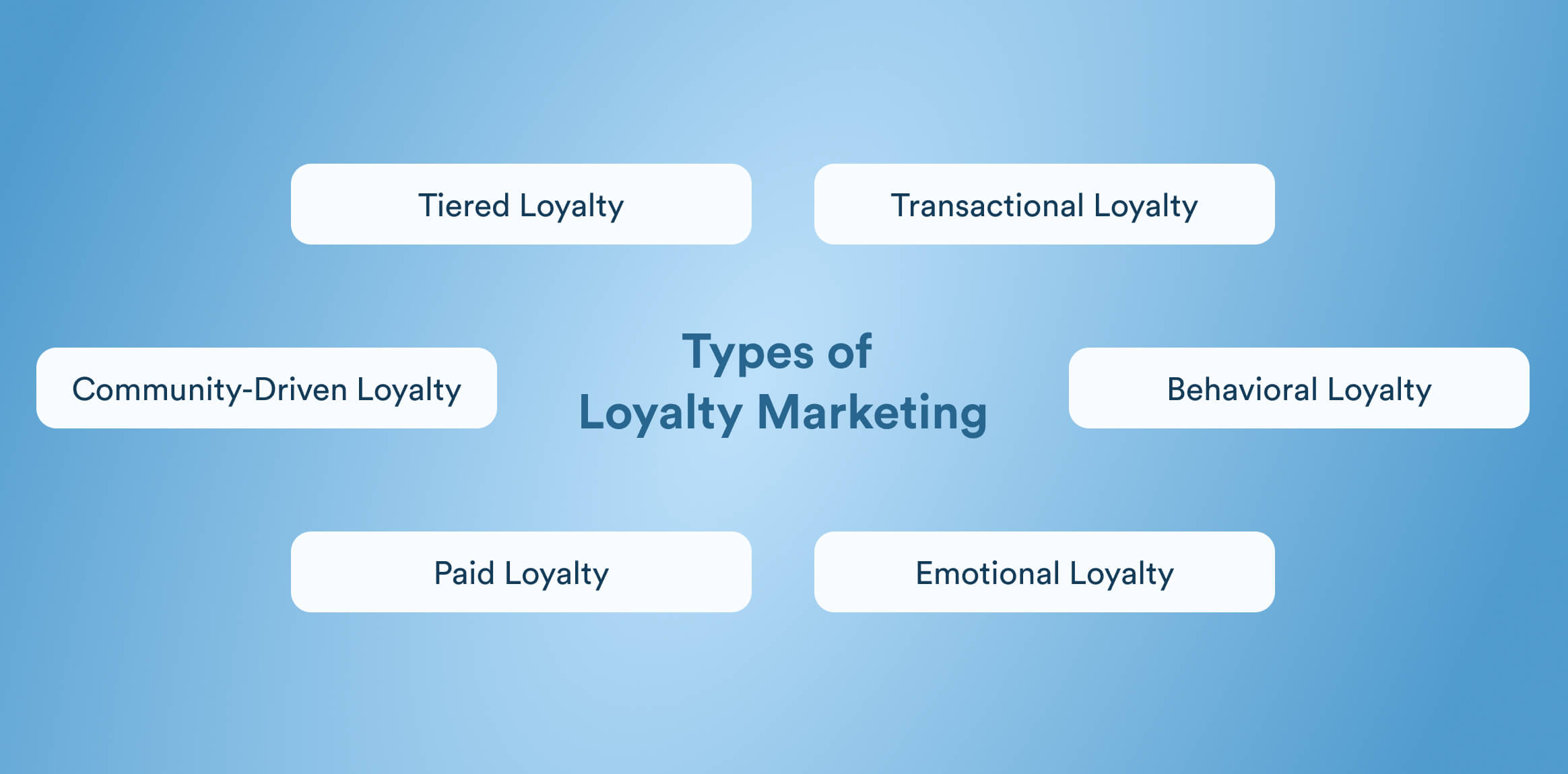
- Transactional Loyalty: Built around clear, immediate rewards, such as points, discounts, or cashback, for repeat purchases or specific actions. This approach appeals to customers seeking tangible value and quick gratification, motivating repeated engagement through predictable incentives.
- Behavioral Loyalty: Goes beyond purchases, rewarding customers for actions like writing reviews, referring friends, or engaging with content. This type of loyalty marketing leverages routine, non-purchase interactions to deepen brand involvement and build ongoing habits.
- Emotional Loyalty: Formed when customers feel personally connected to a brand through shared values, trust, or exceptional experiences. Brands foster emotional loyalty by consistently delivering on promises, demonstrating empathy, and building authentic relationships that drive advocacy.
- Tiered Loyalty: Uses a structured program with milestones or levels (e.g., silver, gold, platinum) to incentivize ongoing engagement. As customers unlock new tiers, they access greater benefits, fueling motivation to participate and progress.
- Community-Driven Loyalty: Cultivated through forums, user-generated content, and referral programs that encourage customers to interact and identify with like-minded peers. This loyalty marketing type fosters a sense of belonging and strengthens the overall brand community.
- Paid Loyalty: Involves customers paying a recurring fee (such as a subscription) for exclusive access to premium benefits, early releases, or enhanced customer service. Paid programs drive the highest commitment and ongoing participation from invested members.
Explore different types of customer loyalty programs to find out which one is the right fit for your business.
Lifecycle Fit & Alignment
Each loyalty model aligns with specific stages of the customer journey for maximum impact. Transactional and paid loyalty often excel at acquisition, offering compelling incentives or memberships to attract new users. During activation, behavioral and community-driven loyalty motivate initial engagement and deepen involvement beyond the first purchase.
Retention is strengthened through tiered and emotional loyalty, rewarding ongoing activity and fostering trust or affinity for the brand. Finally, community-driven and emotional loyalty are especially effective for referral and advocacy, as engaged, passionate customers naturally become brand promoters within their networks. This strategic alignment ensures loyalty programs drive value at every touchpoint of the customer lifecycle.
Frameworks & Models That Support Loyalty Marketing
Effective loyalty marketing is grounded in proven models that help brands design, evaluate, and optimize programs tailored to the evolving needs of their customers. By leveraging these frameworks, marketers can move beyond intuition and build loyalty strategies driven by data and behavioral insights. Below are four foundational models with clear applications to real-world loyalty initiatives:
1. Loyalty Ladder
This model visualizes the progression a customer takes with a brand, from initial contact to becoming a vocal advocate. The journey typically follows these key stages:
- Prospect: Curious individuals exploring the brand for the first time
- Customer: Converts and makes their initial purchase
- Loyalist: Demonstrates repeat behavior and begins identifying with the brand
- Advocate: Actively promotes the brand through referrals or positive reviews
Brands can use the Loyalty Ladder to measure current loyalty levels, identify drop-off points, and implement targeted strategies that move customers upward, such as referral bonuses for advocates or special rewards for loyalists.
2. RFM Segmentation (Recency, Frequency, Monetary Value)
RFM analysis is a data-driven model that segments users based on how recently they engaged, how often, and how much they spend. By scoring customers on these three attributes, marketers can:
- Identify high-value segments for exclusive perks
- Re-engage those showing declining activity
- Personalize offers for dormant or occasional buyers
RFM helps ensure that each lifecycle stage receives the most relevant outreach, maximizing conversion and retention rate.
3. Hooked Model
Popularized by Nir Eyal, the Hooked Model distills habit formation into four sequential steps:
- Trigger: An external or internal cue prompts action (e.g., push notifications).
- Action: The user performs a simple behavior (e.g., opening the app, making a purchase).
- Reward: A variable, meaningful incentive follows (e.g., loyalty points, surprise gift).
- Investment: The user invests time, data, or money, increasing commitment to the brand.
Marketers use this cycle to design loyalty programs that drive ongoing, habitual engagement and reinforce long-term retention.
4. Customer Lifecycle Model (Mapped To AARRR Stages)
The AARRR framework, i.e, Acquisition, Activation, Retention, Referral, Revenue, aligns loyalty interventions with each phase of the user journey. Examples include:
- Acquisition: Welcome bonuses to convert new users
- Activation: Early milestones that encourage first meaningful interaction
- Retention: Tiered rewards or exclusive benefits sustaining ongoing engagement
- Referral: Incentivized sharing to attract new prospects
- Revenue: Upselling and cross-selling through targeted loyalty offers.
This model ensures that loyalty marketing is not siloed but strategically embedded across every stage for compounding impact.
7 Loyalty Marketing Strategies (With Real-World Examples)
With the right loyalty marketing strategies, you can turn first-time buyers into repeat customers and transform occasional users into enthusiastic brand advocates. Rather than relying on one-size-fits-all incentives, leading brands employ a blend of creative tactics, each suited to different customer motivations and lifecycle stages.
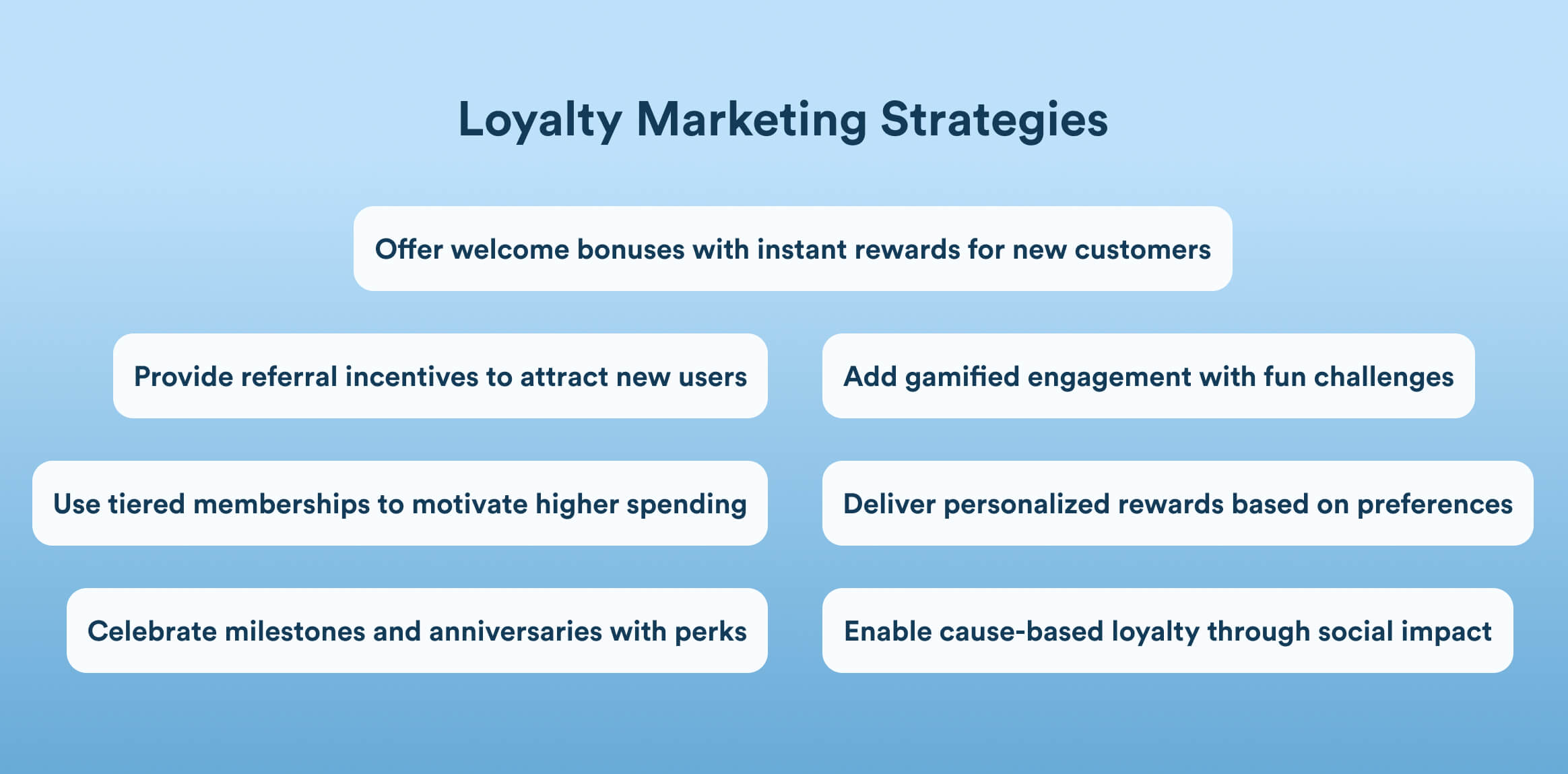
Below, we highlight seven effective loyalty marketing strategies, each illustrated with a real-world example to show how companies are driving measurable results:
1. Welcome Bonus or First-Purchase Rewards
A welcome bonus provides immediate satisfaction and establishes the foundation for a brand’s relationship with new customers. For example, many beauty and retail brands offer new members loyalty points, discounts, or free gifts with their first purchase. This early incentive sets a positive tone, encourages customers to return, and helps them quickly experience the value of joining the program.
The welcome experience also familiarizes customers with how the program works, boosting confidence and reinforcing future engagement. Even skeptical shoppers are more likely to continue participating when they see tangible benefits right at the start.
2. Tiered Membership Programs
Tiered loyalty programs incentivize customers to increase their engagement by unlocking progressively better benefits as they ascend through levels, often labeled Silver, Gold, or Platinum. DSW’s VIP program is a prime example: as members spend more, they reach higher tiers, which bring perks like free shipping, birthday gifts, and early access to sales.
Personalized status emails celebrate achievements and nudge customers to the next tier. By linking exclusive rewards to accumulated loyalty, DSW generates a sense of aspiration and achievement, driving increased sales while boosting retention, as customers are less likely to forfeit hard-won privileges.
3. Referral Incentives
Referral-based loyalty strategies turn satisfied customers into brand advocates by offering rewards when they bring new users on board. For instance, fintech app PayPal’s historic “Refer a Friend” initiative granted both the referrer and referee bonus cash for every successful sign-up and transaction.
This tactic helped PayPal achieve rapid viral growth in its early years, as many users promoted the service within their networks. Referral incentives harness trust between peers, dramatically reduce acquisition costs and boost brand credibility, expanding customer bases organically while reinforcing loyalty among existing users who feel valued for their advocacy
4. Gamified App Engagement
Adding elements of play into loyalty programs is a simple but powerful way to keep customers interested. Instead of only collecting points, members might unlock rewards by completing challenges, maintaining streaks, or progressing through levels. This approach makes the experience fun rather than transactional.
You can add features such as digital scratch cards, spin-to-win wheels, or progress bars that fill up every time someone makes a purchase. These small interactive moments turn routine purchases into something more exciting, while also nudging customers to return and see what they can unlock next. This approach transforms routine engagement into entertainment, making loyalty participation enjoyable and sticky, ultimately fostering stronger ties and better retention.
5. Personalized Rewards and Offers
Personalization elevates loyalty programs by tailoring rewards and offers to individual customer preferences, behaviors, and purchase history. Instead of generic discounts, brands use data insights to recommend relevant perks, such as bonus points on frequently purchased items, targeted coupons, or early access to products customers have shown interest in.
By recognizing unique tastes and habits, personalized rewards make customers feel seen and valued, which deepens emotional connections and drives repeat purchases. This approach not only boosts engagement but also increases program efficiency, as customers are more likely to redeem offers that resonate with their actual needs.
6. Anniversary or Milestone Rewards
Recognizing customer anniversaries or usage milestones is a powerful way to reinforce positive associations and ongoing loyalty. For example, many retailers and brands now celebrate the anniversary of a customer’s first purchase or loyalty program enrollment by offering special rewards, such as exclusive discounts, bonus points, or free gifts. This acknowledges the customer’s ongoing relationship with the brand.
This acknowledges customer commitment and encourages further usage and upgrades. Such surprises spark positive sentiment, make customers feel genuinely appreciated, and often lead recipients to share their experience, serving both retention and word-of-mouth objectives.
7. Cause-Based Loyalty
Increasingly, brands empower customers to convert rewards into charitable donations or community impact, appealing to shared values rather than just discounts. For example, Starbucks Rewards lets members donate earned Stars to support select charities, especially during key campaigns.
This approach attracts socially conscious consumers and creates emotional alignment between brand and customer values. Enabling charitable giving through loyalty programs positions brands as authentic and empathetic, deepening emotional loyalty, which is more resilient and enduring than transactional ties.
Explore more: How to boost customer retention with loyalty programs.
Loyalty Marketing Best Practices
Effective loyalty marketing comes from consistently adapting to evolving customer expectations and business goals. For marketing leaders focused on retention and engagement, proven best practices help ensure loyalty initiatives deliver measurable value. Below are key principles to guide the development and optimization of successful loyalty marketing programs:
- Prioritize Personalization at Scale: Deliver tailored offers, rewards, and experiences using customer data and predictive analytics. As per White Label Loyalty, 3% of brands have increased their efforts to deliver a personalized experience to customers, with this trend driven by advances in AI and customer data.
- Enable Seamless Omnichannel Experiences: Ensure membership, rewards, and messaging are consistent and accessible across mobile, web, and offline touchpoints, such as mobile-first platforms, which now drive the most frequent and sticky engagement.
- Expand Ways to Earn and Engage: Go beyond points for purchases by rewarding behaviors like referrals, reviews, social shares, and community participation; broadening engagement encourages deeper habits and advocacy.
- Offer Tiered, Experiential, or Premium Rewards: Use status tiers, exclusive access, instant wins, and premium features to create status and excitement. These top programs increasingly focus on memorable experiences, not just discounts.
- Foster Strategic Partnerships: Collaborate with other brands to develop co-branded rewards or connected ecosystems, amplifying value, growing reach, and building greater switching costs for members.
- Leverage Automation and AI: Automate reward triggers and communications with intelligent systems for real-time, relevant, and scalable loyalty touches. According to Open Loyalty, over 30% of brands are currently investing in loyalty automation by 2025.
- Support Sustainability and Social Values: Offer options for eco-conscious rewards, donations, or cause-driven initiatives to connect with customer values, building emotional loyalty and brand differentiation.
- Continuously Measure and Iterate: Track key metrics like retention, engagement, and ROI. You can use insights to refine rewards and program design in response to changing customer preferences.
How CleverTap Promos Powers Loyalty Marketing at Scale
CleverTap Promos is a comprehensive loyalty and rewards platform designed to transform transactional redemptions into meaningful, long-term customer relationships. By combining advanced personalization, seamless integration, and robust analytics, CleverTap empowers marketers to create dynamic loyalty programs that resonate deeply with users and drive sustained engagement.
Key Capabilities of CleverTap Promos
- Hyper-Personalized Rewards
At the heart of CleverTap Promos is its ability to deliver hyper-personalized rewards triggered by real-time user behavior. Whether a customer reaches a milestone, completes specific actions, or exhibits churn signals, marketers can automate tailored incentives that motivate continued engagement and repeat purchases. These timely interventions ensure that customers feel valued at the exact moments that matter, strengthening loyalty over time. - API-First Loyalty Wallet
The platform features a flexible, API-first loyalty wallet that enables brands to issue, manage, and track points, coupons, and other rewards effortlessly across multiple channels. This architecture makes it simple to design complex program structures, from bulk or single-use coupons to dynamic discount rules that adapt based on customer segments, geographies, or behaviors. By centralizing reward management, CleverTap Promos allows brands to deliver consistent and seamless experiences to every user. - Seamless Partner Voucher Campaigns
CleverTap also facilitates partner voucher campaigns that extend loyalty ecosystems by integrating third-party offers. Marketers can easily import, manage, and distribute vouchers in bulk while tracking the complete lifecycle—from issuance to redemption to expiry. Built-in safeguards ensure security and prevent misuse, while customers enjoy relevant cross-brand benefits that add value and build broader loyalty. - Actionable Analytics
To ensure every promotion delivers measurable impact, CleverTap includes a built-in analytics suite that provides deep insights into redemption patterns, campaign ROI, and customer loyalty behavior. Marketers can monitor key performance metrics in real time and adjust promotions or rules instantly, ensuring campaigns remain both cost-efficient and effective in driving repeat purchases. - Scalable, Future-Ready Programs
By leveraging this unified and API-driven platform, brands can scale loyalty programs without friction. CleverTap Promos enables them not only to increase retention but also to convert casual buyers into passionate brand advocates. With smarter personalization, seamless integrations, and continuous optimization, brands can fuel long-term revenue growth and achieve a durable competitive advantage in their markets.
Discover how CleverTap Promos delivers personalized rewards, seamless partner vouchers, and real-time analytics to grow your business.
Frequently Asked Questions (FAQs)
What is the difference between loyalty marketing and a loyalty program?
Loyalty marketing is the broader strategic approach focused on building long-term, meaningful relationships with customers through personalized experiences, engagement, and retention efforts. A loyalty program, on the other hand, is a specific tool or mechanism within loyalty marketing, typically offering rewards, points, or perks to incentivize repeat purchases. Loyalty programs focus on transactional incentives such as discounts or points, whereas loyalty marketing includes emotional, behavioral, and experiential tactics that build lasting customer connections.
How do you measure the success of a loyalty marketing strategy?
Success is measured by tracking key performance indicators such as customer retention rates, repeat purchase frequency, customer lifetime value (CLV), net promoter score (NPS), and engagement metrics like program participation and reward redemption rates. Qualitative feedback is used to gauge emotional connection and customer advocacy. Integration of data analytics and lifecycle models helps optimize and tailor loyalty efforts for ongoing improvement.
Can loyalty marketing work without offering discounts?
Yes, loyalty marketing can succeed without relying solely on discounts. Programs that emphasize emotional loyalty, exclusive experiences, personalized recognition, community engagement, or cause-driven rewards create deeper, more resilient connections. These strategies foster brand affinity and long-term retention beyond transactional incentives, aligning with evolving consumer expectations for meaningful engagement.
How long does it take to see results from loyalty marketing?
The timeline varies by industry, program design, and customer base, but meaningful results typically emerge within 6 to 12 months. Initial gains appear from increased repeat purchases and engagement, while stronger emotional loyalty and advocacy develop over longer periods. Continuous measurement and iteration accelerate success, refining rewards, communication, and personalization strategies along the way.
Subharun Mukherjee 
Heads Cross-Functional Marketing.Expert in SaaS Product Marketing, CX & GTM strategies.
Free Customer Engagement Guides
Join our newsletter for actionable tips and proven strategies to grow your business and engage your customers.

